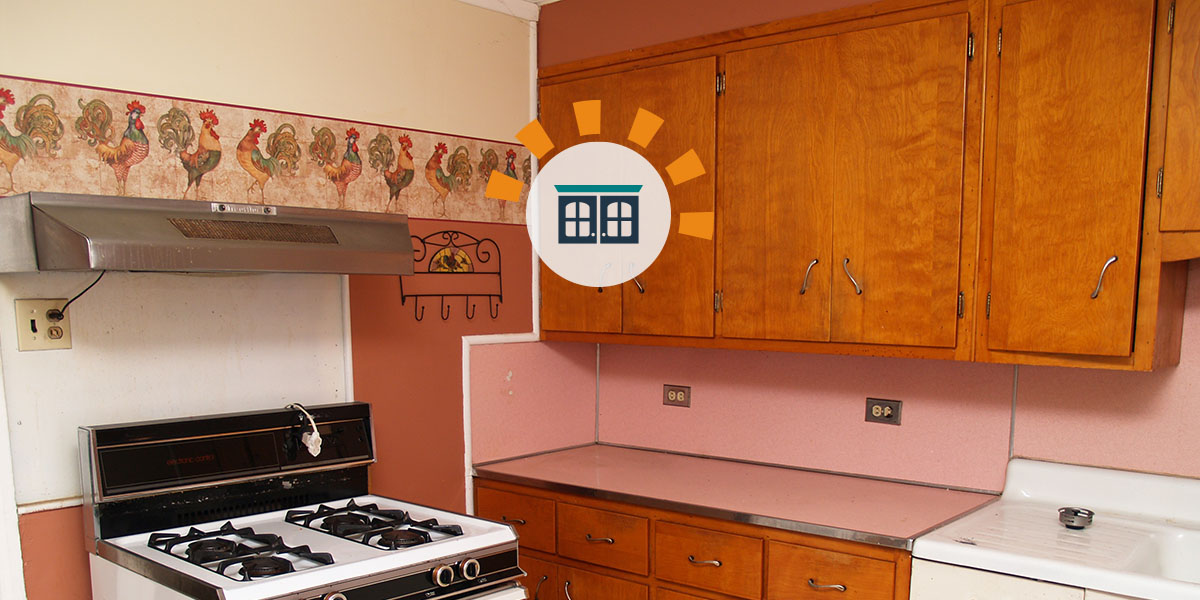Yes, kitchen cabinets can be removed and reused. Proper care during removal ensures they remain intact and functional.
Reusing kitchen cabinets is an eco-friendly and cost-effective option during renovations. With careful planning, homeowners can preserve the integrity of their cabinets for future use. This approach not only saves money but also reduces waste, contributing to a sustainable environment.
Additionally, repurposing cabinets allows for creative redesigns and customization in new spaces. Proper tools and techniques are essential for successful removal without damaging the cabinets. Whether you’re updating your kitchen or moving to a new home, reusing cabinets can be a smart and practical solution.

Table of Contents
ToggleAssessing Your Cabinets
Before deciding to remove and reuse your kitchen cabinets, it’s crucial to assess their current state. This evaluation will help you understand if the cabinets are worth the effort and expense of repurposing. Key factors to consider include the material and condition, age, and wear of the cabinets. Let’s delve into each aspect.
Material And Condition
The material of your kitchen cabinets plays a significant role in their reusability. Cabinets made from solid wood are more durable and easier to refurbish. On the other hand, cabinets made from particleboard or MDF may not withstand multiple installations and removals.
| Material | Durability | Reusability |
|---|---|---|
| Solid Wood | High | Excellent |
| Particleboard | Low | Poor |
| MDF | Medium | Fair |
Inspect the condition of the cabinets. Look for signs of water damage, warping, or cracks. Cabinets in good condition are easier to reuse and will last longer.
Age And Wear
The age of your kitchen cabinets is another critical factor. Older cabinets may have outdated designs or worn-out hardware. If your cabinets are more than 20 years old, they might not be worth the effort to salvage.
Examine the wear and tear of your cabinets. Check for loose hinges, sagging shelves, and faded finishes. Minor wear can often be repaired, but extensive damage may require replacement.
- Loose Hinges
- Sagging Shelves
- Faded Finishes
By evaluating these factors, you can make an informed decision about reusing your kitchen cabinets. Proper assessment helps you save time and money while ensuring a successful renovation project.

Planning The Removal
Removing and reusing kitchen cabinets can save money and time. Proper planning ensures a smooth process. Before starting, gather the necessary tools and safety gear. Follow a step-by-step guide to make the job easier and safer.
Tools And Safety Gear
Having the right tools and safety gear is crucial. Below is a list of essential items:
- Power Drill: To unscrew cabinets easily.
- Screwdrivers: For removing screws.
- Pry Bar: To detach cabinets from the wall.
- Utility Knife: For cutting through caulk and sealant.
- Safety Glasses: Protect your eyes from debris.
- Gloves: Keep your hands safe from sharp edges.
- Measuring Tape: Ensure accurate measurements for reinstallation.
Step-by-step Guide
- Empty the Cabinets: Remove all items from the cabinets.
- Label the Cabinets: Use labels to mark each cabinet. This helps in reinstallation.
- Turn Off Power: Ensure the power is off. This prevents electrical hazards.
- Remove Cabinet Doors: Use a screwdriver to take off the doors.
- Unscrew Fasteners: Use a power drill to remove screws from the cabinets.
- Cut Sealant: Use a utility knife to cut through caulk and sealant.
- Detach Cabinets: Use a pry bar to gently detach the cabinets from the wall.
- Inspect for Damage: Check for any damage. Repair if necessary before reuse.
By following these steps, you can safely remove and reuse your kitchen cabinets. Proper planning and the right tools make the process efficient and hassle-free.
Cleaning And Preparing
Cleaning and preparing your kitchen cabinets for reuse is crucial. This step ensures the cabinets are in the best condition for their new home. Proper cleaning and preparation can make the cabinets look brand new. Follow these steps to get your cabinets ready.
Removing Old Paint Or Stains
Old paint or stains can make cabinets look worn out. Removing these can refresh their appearance. Start by gathering necessary supplies:
- Paint remover or stripper
- Sandpaper (various grits)
- Safety gloves and goggles
- Scrapers
First, apply the paint remover according to the instructions. Wear safety gloves and goggles to protect yourself. Use a scraper to gently remove the old paint. Sand the surface with medium-grit sandpaper. Finish with fine-grit sandpaper for a smooth surface. Cleaning off any residue is important before moving on.
Repairing Minor Damages
Minor damages can be easily repaired. Small chips, cracks, or holes can be fixed with wood filler. Follow these steps:
- Clean the damaged area with a damp cloth.
- Apply wood filler with a putty knife.
- Allow the filler to dry completely.
- Sand the area until smooth.
For loose hinges or handles, tighten screws or replace them if necessary. Check all joints and connections. Ensure they are sturdy and secure. This will extend the life of your cabinets.
| Task | Materials Needed | Steps |
|---|---|---|
| Removing Old Paint | Paint remover, Sandpaper, Scraper, Safety gear |
|
| Repairing Damages | Wood filler, Putty knife, Sandpaper |
|
Finding A New Home
When remodeling your kitchen, you might wonder about the fate of your old cabinets. Kitchen cabinets can indeed be removed and reused, providing various options for their next life. Let’s explore how you can find a new home for your cabinets.
Relocating Within Your Home
Relocating kitchen cabinets within your home can be a practical choice. Repurpose these cabinets in your garage, basement, or laundry room. This not only saves money but also gives these spaces more storage. Additionally, a home office could benefit from extra cabinets for organizing supplies.
Steps to Relocate Cabinets:
- Carefully remove cabinets from the kitchen.
- Inspect for any damage or necessary repairs.
- Measure the new space to ensure fit.
- Secure cabinets in their new location.
Repurposing within the home minimizes waste and adds value to other areas.
Donating Or Selling
Another option for your old cabinets is donating or selling them. Many organizations accept gently used cabinets. Check with local charities or Habitat for Humanity. Donating can benefit the community and is eco-friendly.
Where to Donate:
- Local charities
- Habitat for Humanity ReStores
- Community centers
Selling your cabinets can also be profitable. Online marketplaces like Craigslist and Facebook Marketplace are great for finding buyers. Ensure to list your cabinets with detailed descriptions and clear photos.
Tips for Selling:
- Clean and inspect cabinets before listing.
- Take high-quality photos from multiple angles.
- Provide accurate measurements and details.
Both donating and selling extend the life of your cabinets and support sustainability.
Repurposing Ideas
Have you ever thought about removing and reusing kitchen cabinets? Don’t throw them away! These cabinets can be repurposed for many creative projects. Let’s explore some fun and practical ideas.
Upcycling Projects
Upcycling is a great way to give old cabinets new life. Here are some exciting projects to consider:
- Bookshelves: Remove the doors and repaint the cabinets. You now have stylish bookshelves.
- Craft Storage: Use smaller cabinets to store craft supplies. Label each one for easy access.
- Bathroom Vanity: Convert a kitchen cabinet into a unique bathroom vanity. Add a sink and you’re done!
Creative Uses Beyond The Kitchen
Kitchen cabinets are not just for kitchens. You can use them in many other places:
- Garage Storage: Mount the cabinets in the garage. Store tools, paint, and more.
- Office Organization: Place cabinets in your home office. Organize files, books, and supplies.
- Closet Organizer: Install cabinets in your closet. Use them for shoes, accessories, and clothes.
These are just a few ideas to get you started. Repurposing kitchen cabinets is a fun and eco-friendly way to refresh your space.
Expert Tips
Removing and reusing kitchen cabinets can save money and resources. Experts have shared their tips for success. Let’s explore these expert tips to make the process easier.
Common Mistakes To Avoid
Avoid these mistakes when removing kitchen cabinets:
- Not labeling parts. Label each part to remember its place.
- Using the wrong tools. Use proper tools for a smooth removal.
- Ignoring hidden screws. Check for hidden screws behind panels.
Best Practices
Follow these best practices to ensure a successful cabinet removal:
- Gather the right tools. You need a drill, screwdriver, and pry bar.
- Empty the cabinets. Remove all items inside to lighten the load.
- Turn off the power. Ensure safety by cutting power to the kitchen.
- Start from the top. Remove upper cabinets before lower ones.
- Protect your floors. Lay down drop cloths to avoid damage.
- Work slowly. Take your time to prevent breaking the cabinets.

Frequently Asked Questions
Can Kitchen Cabinets Be Removed Easily?
Yes, kitchen cabinets can be removed with the right tools and a bit of patience.
Can Kitchen Cabinets Be Reused?
Yes, kitchen cabinets can be reused if they are in good condition.
What Tools Are Needed To Remove Cabinets?
Basic tools needed include a screwdriver, hammer, pry bar, and utility knife.
How Long Does It Take To Remove Cabinets?
Removing kitchen cabinets typically takes a few hours, depending on their size and complexity.
Do I Need Professional Help To Remove Cabinets?
You can remove cabinets yourself, but professional help ensures no damage to walls or other fixtures.
Can Old Cabinets Be Repainted?
Yes, old cabinets can be repainted to give them a fresh, new look.
Is It Worth Reusing Old Cabinets?
Reusing old cabinets is cost-effective and eco-friendly if they are still functional and in good condition.
What Should I Check Before Reusing Cabinets?
Check for structural integrity, water damage, and wear and tear before reusing cabinets.
Can I Sell My Old Kitchen Cabinets?
Yes, many people sell old kitchen cabinets online or through local classifieds.
Are All Cabinets Reusable?
Not all cabinets are reusable. Check their condition and material quality before deciding to reuse.
Conclusion
Reusing kitchen cabinets is not only possible but also eco-friendly and cost-effective. Proper removal ensures they remain in good condition. Repainting and minor repairs can give them a fresh look. With careful planning, you can save money and reduce waste by reusing your existing kitchen cabinets.


